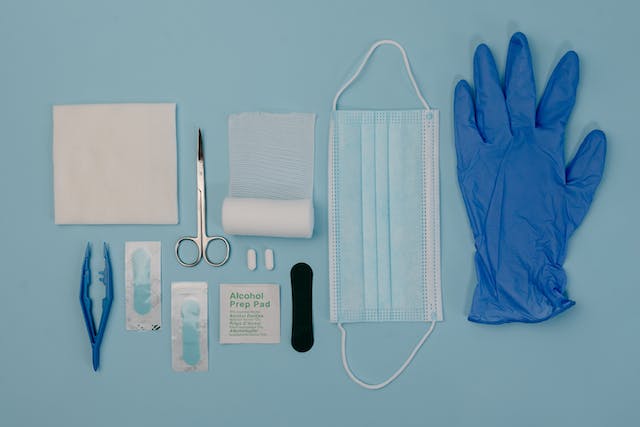The Importance of First Aid for Early Years Practitioners

The Importance of First Aid for Early Years Practitioners
As an Early Years practitioner, ensuring the safety and wellbeing of children is a top priority. This can be difficult to maintain due to the unpredictable nature of working with young children, which is why it’s essential for practitioners to have comprehensive knowledge of first aid practices. With the right approach, early childhood professionals can feel confident in knowing they are adequately prepared to handle any situations that may arise quickly and effectively while maintaining a safe environment for all those involved. In this blog post, we’ll cover what first aid involves, how you should prepare as an EYFS professional, and provide examples of the best practices that could help keep your setting running smoothly should an emergency occur.
Overview of first aid – what is it, why is it important for Early Years Practitioners and what are the benefits of knowing first aid
First aid is a crucial skill for Early Years Practitioners to possess, as it allows them to provide immediate assistance in case of an emergency. This can include administering basic treatments for minor injuries such as cuts, grazes, or burns, or being able to recognize and respond to more serious situations like choking, seizures, or cardiac arrest. Knowing how to respond quickly and effectively in these situations can make all the difference in preventing complications or even saving lives. Additionally, being trained in first aid can give practitioners greater confidence when it comes to dealing with their everyday responsibilities, whether that’s leading activities or outings. It’s an essential skill set that can provide a sense of security for both the practitioner and the children they are responsible for.
What knowledge and skills are required in order to administer first aid effectively
In order to administer first aid effectively, one must possess a certain set of knowledge and skills. This includes a basic understanding of human anatomy and physiology, as well as the ability to recognize signs and symptoms of various medical emergencies. It is also crucial to know how to properly address different types of injuries, such as cuts, burns, and fractures. Additionally, good communication skills are vital when administering first aid, as it is important to be clear and concise when giving instructions or providing information to emergency medical personnel. Finally, staying calm under pressure and being able to think quickly and effectively can make all the difference in a potentially life-threatening situation. With the right knowledge and skills, anyone can be prepared to handle a medical emergency.
Different types of emergency scenarios such as burns, choking, allergic reactions and more
Emergencies can happen at any time, which is why it’s important to know how to handle them. Burns, choking, and allergic reactions are just a few examples of the many different types of emergencies that can occur. In the event of a burn, immediately cool the affected area with cold water for at least 10 minutes. If someone is choking, perform the Heimlich manoeuvre or call for medical assistance. For allergic reactions, quickly administer an epinephrine auto-injector if available, and seek professional help right away. Being prepared and knowing how to react can make a huge difference in the outcome of an emergency situation.
The legal implications of not having adequate first-aid skills
Not having adequate first aid skills can have several legal implications that one may not realise. If an individual is in a position of responsibility such as a workplace or school where it is required for them to know first aid, failure to do so can lead to significant legal consequences. If a person is injured and someone with inadequate first aid skills tries to help them, further damage could be done. In such a case, the individual who tried to help could be held liable for the additional injuries caused. Therefore, it is essential to have adequate first aid skills to ensure the safety of both oneself and those around them, and to avoid any legal repercussions.
Tips on how to effectively use safety equipment and supplies
When it comes to safety, there’s no such thing as being too cautious. Using safety equipment and supplies correctly can help decrease the risk of accidents and injuries. It’s important to take the time to understand the purpose of each piece of equipment and how to use it properly. For instance, wearing a hard hat can protect your head from falling debris, while safety goggles can keep your eyes safe from dust and hazardous liquids. Make sure to inspect and maintain your safety equipment regularly, as damaged gear can be dangerous. Remember, taking the right precautions can make all the difference in creating a safe and secure workplace.
How to access reliable and up-to-date training about first aid
When it comes to first aid, having access to reliable and up-to-date training is crucial in emergency situations. Fortunately, there are many resources available to help individuals learn the necessary skills. Online courses and videos offer step-by-step instructions and demonstrations, while local community centres and organisations often offer high speed training paediatric first aid. It’s important to make sure that the resources being used are reputable and follow recognized guidelines for first aid practices. Additionally, refreshing skills and knowledge regularly is important to ensure that one is always prepared to respond in a first-aid emergency. With the right training and preparation, anyone can be a valuable asset in providing help and potentially saving lives.
All Early Years Practitioners should be equipped with the knowledge and skills to appropriately handle any emergency first aid situation. Investing time, money, and energy into understanding first aid is well worth it assuredly. First aid training provides the opportunity to become an EYP who is confident in implementing age-appropriate levels of support and care that protect the safety of children in their charge. Moreover, it is critical to stay informed on the most current, innovative approaches to first aid practices so that everyone involved can rest easy knowing they are safe. The proper use of safety equipment and supplies along with comprehensive skills should therefore be taken seriously. Should practitioners find themselves having questions about where to seek out available training or need additional guidance, they should feel free to reach out to their local authority for certified resources as required by law. With these paramount points in mind, Early Years Practitioners can go forth confidently providing first-class safety and care when handling any type of medical emergency for young children!
No related posts.
